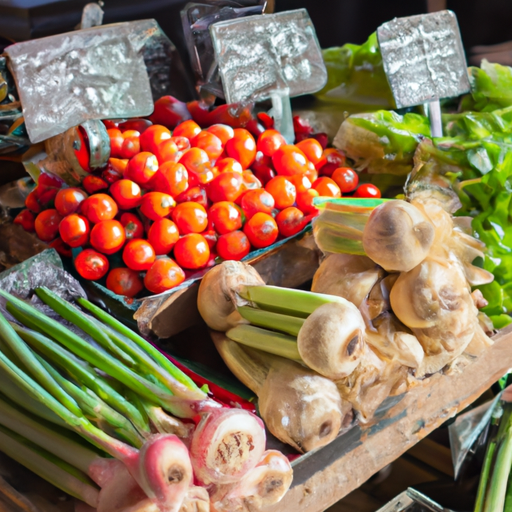Making the decision to switch to a vegan diet is a big step, and it can be overwhelming to figure out how to make the transition. However, with a little bit of planning and preparation, transitioning to a vegan diet can be a rewarding and enjoyable experience. Here are some tips to help you make the transition to a vegan diet smoothly and successfully. In this article, we will take you through our tried and tested tips.
Here is our list of top tips for transitioning onto a vegan diet so it does not become overwhelming for you and put you off.

Educate Yourself
Educate yourself about vegan nutrition: It is important to understand the nutritional needs of a vegan diet in order to ensure that you are getting all of the nutrients your body needs.
A vegan diet can be nutritionally complete as long as it includes a variety of plant-based foods and sufficient calories.
Some key nutrients to pay attention to include protein, iron, calcium, and vitamin B12.
Good sources of protein on a vegan diet include, but are not limited to, soy, beans, lentils, tofu, tempeh, nuts, and seeds.
Fortified plant-based milks and cereals can be good sources of calcium, and iron can be found in leafy green vegetables, beans, and fortified foods.
Vitamin B12 is an important nutrient that is found almost exclusively in animal products, so it is important for vegans to include fortified foods or supplements in their diet.
Planning Is Key
Make a plan: It can be helpful to plan out your meals and snacks in advance, especially when you are first starting out on a vegan diet.
This can help ensure that you are meeting your nutritional needs and make it easier to stick to your vegan diet.
Make a list of your favorite vegan meals and try to incorporate a variety of foods into your diet to ensure that you are getting a wide range of nutrients.
A comprehensive guide on the tips to maintain vegan lifestyle and diet can be a game-changer for both new and experienced vegans looking to enhance their vegan journey.
Stock Up The Pantry
Stock your pantry with vegan staples: Having a well-stocked pantry can make it easier to follow a vegan diet.
Some vegan staples to consider are dried beans, lentils, rice, quinoa, oats, nuts, seeds, and a variety of vegetables and fruit.
It can also be helpful to have some vegan convenience foods on hand, such as frozen veggies, canned beans, and ready-to-eat grains, for days when you don’t have time to cook from scratch.
If you’re unsure where to start your vegan shopping adventure, our blog post shares some fantastic insights on the top spots for purchasing vegan foods.
Be Open To New Foods
Be open to trying new foods: A vegan diet can be a great opportunity to try new foods and expand your culinary horizons.
Don’t be afraid to experiment with new ingredients and flavors, and be open to trying new vegan recipes. You might be surprised by how many delicious and satisfying vegan dishes there are to choose from.
Find Vegan Substitutes
One way to ease into a vegan diet is to start by incorporating more plant-based meals into your diet and gradually reducing your consumption of animal products.
You might also try experimenting with different types of vegan protein sources, such as beans, lentils, tofu, tempeh, and nuts, to see which ones you enjoy the most.
Find vegan substitutes for your favorite non-vegan foods: If you have favorite dishes that you are not ready to give up, try to find vegan substitutes for the animal-based ingredients.
This way your meals will still be satisfying.
Don’t Be Too Hard On Yourself
Don’t be too hard on yourself: Transitioning to a vegan diet can take time and it is normal to make mistakes or have slip-ups along the way.
Don’t be too hard on yourself if you don’t get it right every time, and remember that every little bit helps when it comes to reducing your impact on animals and the environment.
Seek Support
Seek support: Making the transition to a vegan diet can be easier if you have the support of friends, family, or a vegan community.
Consider joining a vegan group or online forum to connect with others who are following a vegan diet, and seek out vegan-friendly restaurants and events in your area.
My Experience
Transitioning to a vegan diet can be a rewarding and enjoyable experience with a little bit of planning and preparation.
Educating yourself about vegan nutrition, making a plan, stocking your kitchen with vegan staples, being open to trying new foods, finding vegan substitutes for your favorite non-vegan foods, and seeking support can all help make the transition to a vegan diet smooth and successful.
I know I fumbled my way through this bit, and a lot of stuff wrong, which frustrated me.
It is also important to remember that everyone’s journey to a vegan diet is unique and there is no “right” way to do it. Read about my journey here.
Some people may choose to transition gradually, while others may prefer to go vegan all at once. Whatever approach you choose, the most important thing is to find a way of eating that works for you and that you feel good about.
I tried to jump into a vegan lifestyle, clearing out the kitchen cupboards without knowing what I was going to replace food with, which made things really difficult.
I’ll be honest, there were times when I wanted to swap back to my vegetarian diet asap.
Wrapping Up: How To Transition To A Vegan Diet
The transition to a vegan diet can be a big one. If this is something that you are serious about doing, it’s worth taking a bit of time to ensure that you get it right. Educating yourself is going to be key to this.
Learn how to achieve optimal health with our comprehensive guide that outlines the mental and physical health benefits of veganism.



